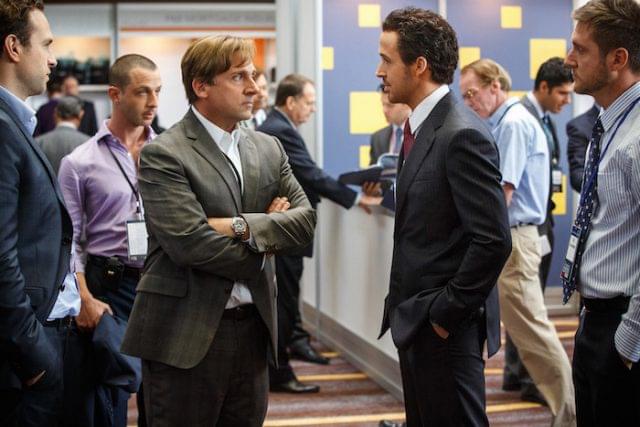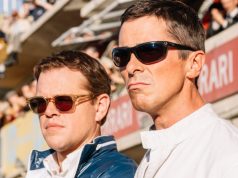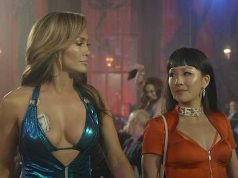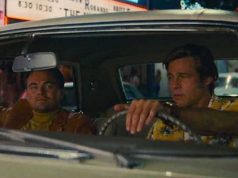
One of the frustrating things about the 2008 financial collapse is that many Americans, even smart ones like me, didn’t really understand what had caused it. The banks had given too many mortgages to people who couldn’t afford them, sure, leading to a high rate of default and foreclosure. But there was also a lot of outrage directed at the guys on Wall Street, who had done something that those outraged believed was immoral, illegal, or both. That’s where it all got fuzzy for a lot of us.
“The Big Short” makes a valiant effort to explain it to the average person, to help us understand what happened and why we should be infuriated. Like the best teachers, the film is entertaining besides being educational, and it takes great pains to make sure we’re keeping up. Some movies over-explain themselves, trying our patience by talking to us like we’re idiots. “The Big Short” shrewdly realizes that when it comes to the intricacies of credit and finance, most of us ARE idiots, and we have secretly wished that someone would explain it to us like we’re 10 years old.
I’ll leave most of the explaining to the film, but the gist is that in the mid-2000s, a handful of money dudes realized there was a housing bubble fixin’ to burst and set out to increase their fortunes by essentially purchasing insurance against housing bubble bursts. Since a collapse of the magnitude they were predicting had never happened before, banks like Goldman Sachs were more than happy to sell them expensive policies, figuring they’d never have to pay out.
In this account, which uses fictionalized versions of real people, we start with rich weirdo Michael Burry (Christian Bale), an obsessive hedge-fund manager with amusing Asperger-y tendencies and a nose for spreadsheets. He’s the one who combs through the data and discovers that thousands upon thousands of mortgages were given to unqualified borrowers, making them very likely to go into default.
Jared Vennett (Ryan Gosling, with dark hair and an unnaturally tan face) is a smaller-scale version of Burry, a fund manager with less money at his disposal but the same drive and commitment. He gets into business with Mark Baum (Steve Carell), an awful Wall Street a-hole who hates Wall Street and runs his investment firm like he’s an outsider (even though he isn’t). Then there are two eager young nobodies, Charlie Geller (John Magaro) and Jamie Shipley (Finn Whitrock), who come to Wall Street with dollar signs in their eyes, stumble upon this situation, and reach out to an old mentor for advice. The mentor, Ben Rickert (Brad Pitt), has left Wall Street and practically gone off the grid, but he still has contacts.
The film was directed and co-written by Adam McKay, whose other movies — “Anchorman,” “Talladega Nights,” “Step Brothers,” “The Other Guys,” and “Anchorman 2” — all starred Will Ferrell. He may seem like an odd choice for this, until you recall the end credits of “The Other Guys,” which went into baffling detail about the collapse of the housing market and showed how intensely interested McKay was.
He handles this, his first non-farce, with confidence. Co-writing with Charles Randolph (“The Life of David Gale”), McKay seems as comfortable making a slick, fact-based comedy as he did making the loosey-goosey Ferrell movies. He uses every trick in the book to maintain a dizzying pace without overwhelming us, like a terrifically engaging college professor with a savage sense of humor.
Think about the challenge McKay faced here. The reason these guys were able to get away with what they did is that only a small number of people understood the arcane, complex financial maneuvers they were pulling. How do you tell a story that owes its very existence to being hopelessly confusing? McKay does it by having characters frequently pause the action, break the fourth wall, and explain the relevant concept to us, using visual aids as needed. When things get especially complex, he uses unorthodox teaching methods like Margot Robbie describing credit-default swaps while sipping champagne in a bathtub, or chef Anthony Bourdain using leftover fish to explain collateralized debt obligations. The movie gives us the knowledge base we need to understand it while we’re watching it, like an author incorporating footnotes into the text. As a result, we’re able to appreciate how clever the scheme was, how short-sighted and arrogant the banks were, and how nakedly greedy everyone was.
The film only stumbles when it comes to the human elements, like Mark Baum’s personal demons and his relationship with his wife (Marisa Tomei), or Michael Burry’s idiosyncrasies. None of the characters, including the ones based on real people, resonate as human beings, and McKay’s sporadic, haphazard efforts to humanize them are ineffective. Metaphorically speaking, the objective of the movie is to explain an elaborate equation, and every now and then McKay tries to tell us what happened to x as a child, or explain why y is so angry.
Still, if there’s a funnier, sharper, more engrossing movie about a financial collapse, I haven’t seen it. To convey so much dry information in a way that’s accurate and conventionally entertaining is practically a miracle. Now can McKay explain the end of “Trading Places”? I’ve never understood that one either.
B+ (2 hrs., 10 min.; )





